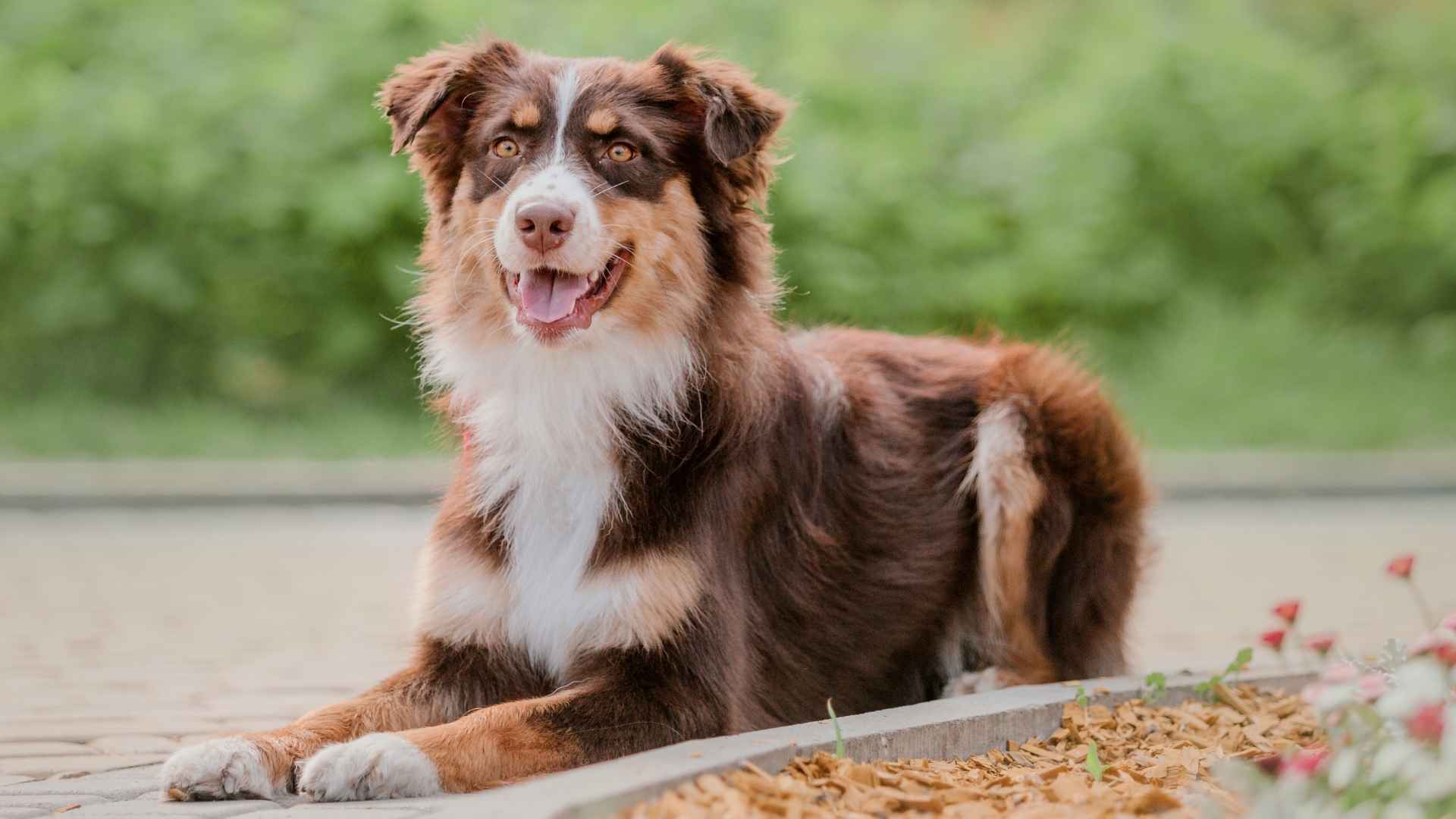I was at a friend’s place last month when I saw their dog for the first time. Cute dog, really calm. But the eyes? I had to ask. “Are his eyes really gold?” They laughed—“Yup. Everyone always asks.”
That’s the first time I realized dogs could even have eyes like that. It’s not obvious in pictures. You really have to see it in real life. But once you do, you remember it. It’s like a little secret detail nature threw in just to keep things interesting. Most people never notice until they actually meet one.
And then it becomes a thing you look for. So I did some digging. Turns out, there’s only a short list of dog breeds that naturally have golden eyes. It’s not about popularity. It’s not about size. Just genetics. These are the 10 dog breeds that have them.
Dog Breeds With Golden Eyes
1. Chesapeake Bay Retriever
The Chesapeake Bay Retriever doesn’t just have golden eyes — its stare carries a quiet intensity shaped by years of waterfowl retrieval. There’s something deeply observant about this dog’s eyes, often catching subtle cues even before words are spoken. These amber-eyed dogs are less reactive, more calculating.
Strength built for tough environments
Bred to withstand icy waters and unforgiving terrain, this breed’s body is muscular and tightly built, as per the Kennel Club. Its dense, oily coat insulates it during long retrieves in winter hunting conditions. The same physical resilience shows in its determined, often stoic expression.
Loyalty that runs deep
This isn’t a dog that bonds with everyone instantly — its loyalty is earned and lifelong. Once connected, the Chesapeake becomes a devoted guardian, often placing itself between its family and anything unfamiliar. That protective nature reflects in its watchful golden gaze.
Intellect with a stubborn edge
Smart but often independent, the breed isn’t quick to please without reason. It responds better to training that respects its intelligence rather than forcing commands. You can often read a Chessie’s decision-making process just by watching the dog’s eyes in action.
2. Weimaraner
The Weimaraner is one of the rare breeds where eye color changes noticeably with age, shifting from pale blue in puppies to striking amber or light gold in adults, as per Orvis. This shift gives them an intense, almost otherworldly stare that seems to look straight through you. Their eyes often mirror their high alertness and mental sharpness.
Built for endurance and decision-making
Originally bred for hunting large game, Weimaraners are built for stamina, not just speed. Their lean, athletic frame is designed to cover ground quickly without tiring. What stands out is how they constantly assess their surroundings before acting, even mid-run.
Sleek coat that highlights their features
Their short coat color, often a silvery-gray or mouse-gray, makes their golden eyes even more prominent against their face. Unlike thicker-furred breeds, the Weimaraner’s smooth coat draws immediate attention to their facial expressions. Even subtle changes in their eyes are easy to catch.
Intensely bonded and emotionally sensitive
This isn’t a furry friend that tolerates long periods of distance; emotional closeness is part of the deal. They tend to shadow their humans closely, always staying aware of tone and body language. Their responses often begin in their eyes before any movement happens.
3. Rhodesian Ridgeback
The Rhodesian Ridgeback’s golden-yellow eyes have a steady, almost unreadable calm, perfect for a breed once relied on to face lions. There’s no frantic energy in their stare; it’s calculated, measuring, like a dog always five seconds ahead. Few yellow eyes feel this deliberate in expression.
Built for pursuit and silence
Originally bred in Southern Africa, this breed was prized for its endurance and its silence during hunts, as stated in Show Dogs. It doesn’t bark unnecessarily, relying instead on physical cues and intense eye contact. Even during movement, the body flows with control, not chaos.
Aloof but deeply aware
Ridgebacks don’t constantly seek attention, but that doesn’t mean they’re unaware. Their head often tilts subtly, golden gaze tracking movement without blinking. If you’re paying attention to eyes in dogs, theirs are more like watchful gatekeepers than eager greeters.
Independent with emotional depth
You won’t find this breed obeying just to impress—it responds to consistency, not coddling. Still, when it chooses closeness, it’s deeply intentional, not casual. For the right person, this amber-eyed companion becomes a steady shadow with eyes that say more than words.
4. Australian Shepherd
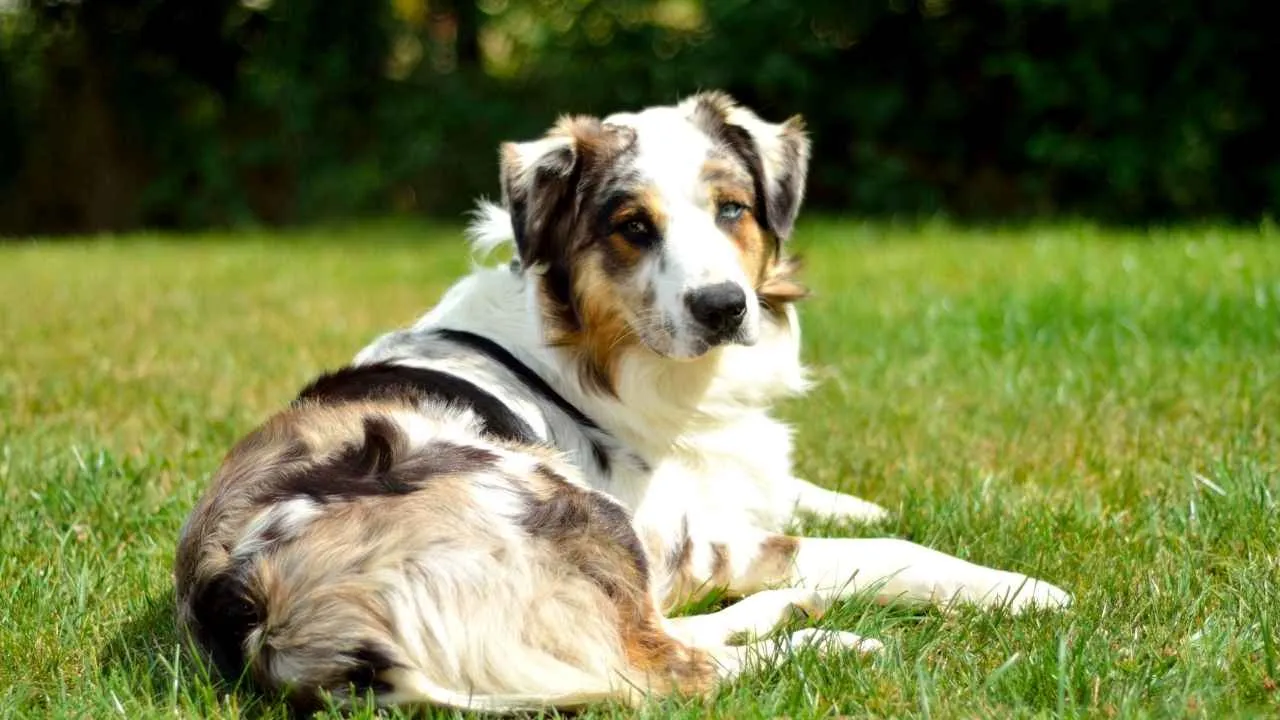
The Australian Shepherd’s golden eyes aren’t passive—they scan constantly, always reading movement, anticipating shifts before they happen. This dog’s gaze is part of its herding instinct, used not just to monitor, but to control. It’s an active, working expression, not an ornamental trait.
Sharp instincts and fast decisions
Selective breeding sharpened this dog’s ability to make instant judgment calls during livestock work. A split-second eye flick can be the difference between maintaining control and chaos. That visual awareness shows even off-duty, where their eyes still track and evaluate constantly.
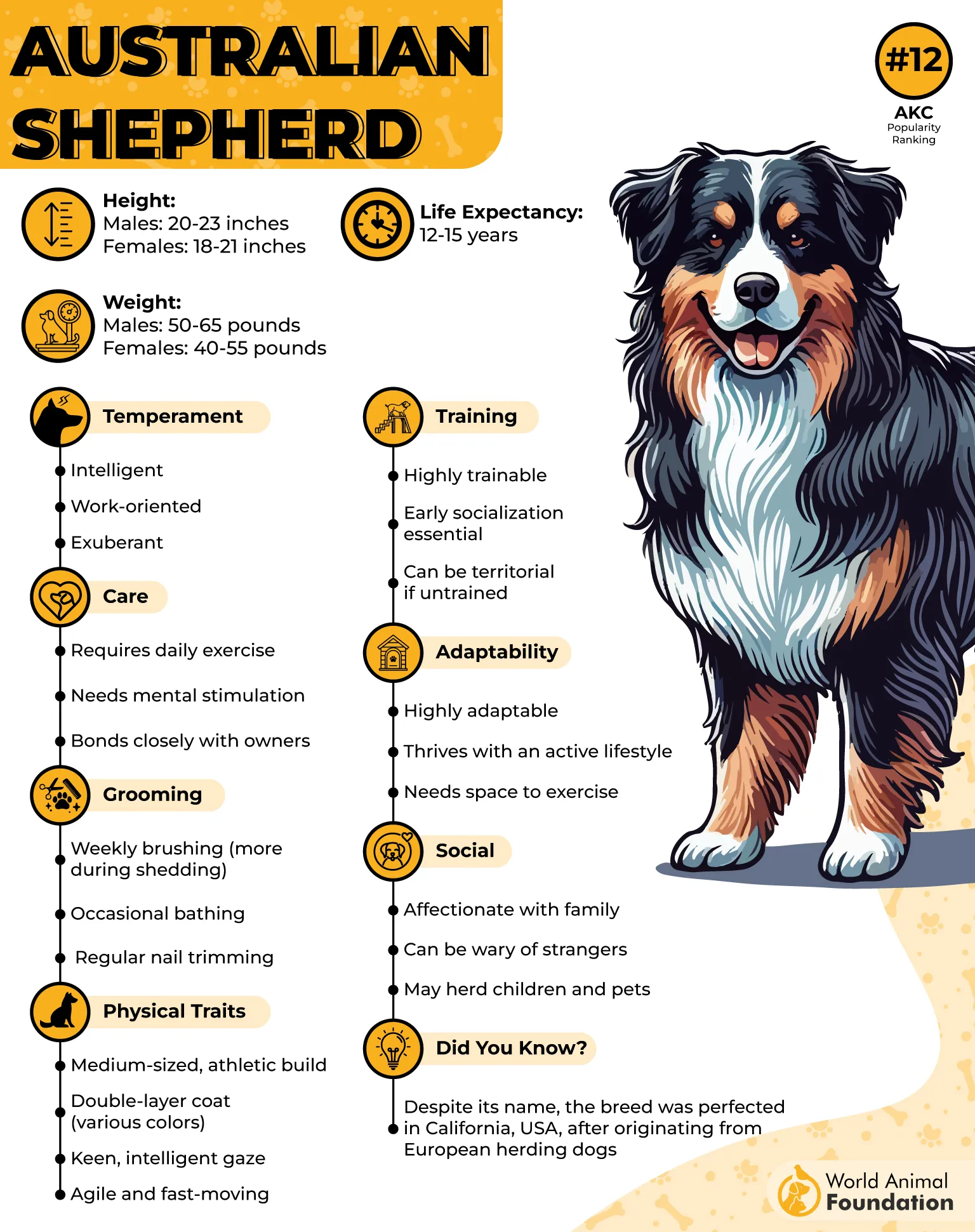
Reserved around strangers
Unlike more openly social breeds, Aussies often hold back when meeting new people. Their golden gaze might look curious from afar, but they don’t approach without purpose. This hesitation isn’t fear—it’s cautious processing rooted in high-level awareness.
Mental stimulation over affection
What drives this breed isn’t praise or cuddles—it’s the chance to solve problems and move with purpose. When under-stimulated, their eyes dull into restlessness, scanning for tasks that aren’t there. Giving them a job resets that focus and sharpens their natural intensity.
5. Irish Water Spaniel
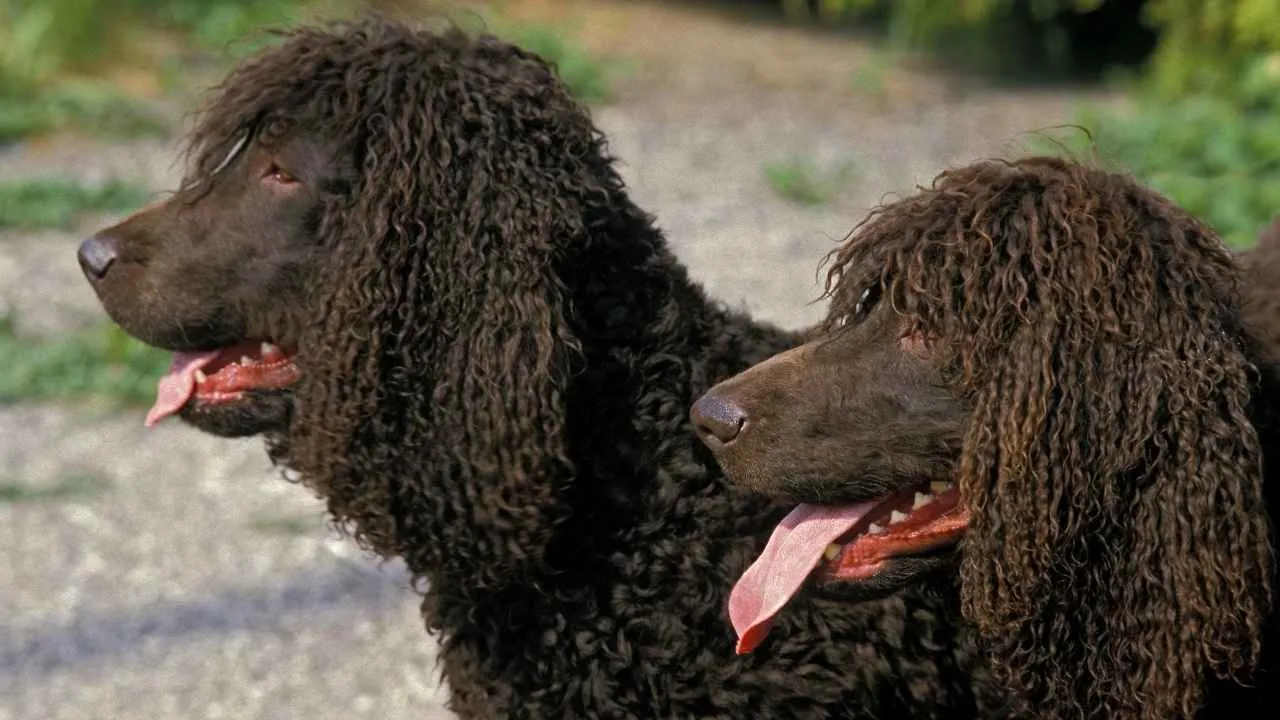
The Irish Water Spaniel’s golden-hued eyes are striking and expressive. They reflect an alert, sometimes mischievous awareness, scanning environments with quiet calculation. There’s a knowing look they give, as if constantly reading your next move.
A coat with unexpected utility
What makes them visually distinct is the tight, crisp curls covering their body, paired with a completely smooth “rat tail.” This isn’t ornamental—those curls repel water, critical for a breed originally used in cold, deep retrieves. That tail worked like a rudder during long-distance swims.

Problem-solving is wired into the breed
These dogs excel at working through physical obstacles in marshy terrain without waiting for direction. Their ability to make quick decisions mid-task made them favorites among seasoned hunters. That same independent thinking sometimes shows up as selective listening at home.
Reserved with strangers, not shy
The breed tends to hold back when meeting unfamiliar people, staying observant rather than jumping into interaction. But once trust builds, their goofy, clownish side surfaces with surprising energy. Their alert golden gaze often stays locked in before they finally decide to let loose.
6. Dachshund
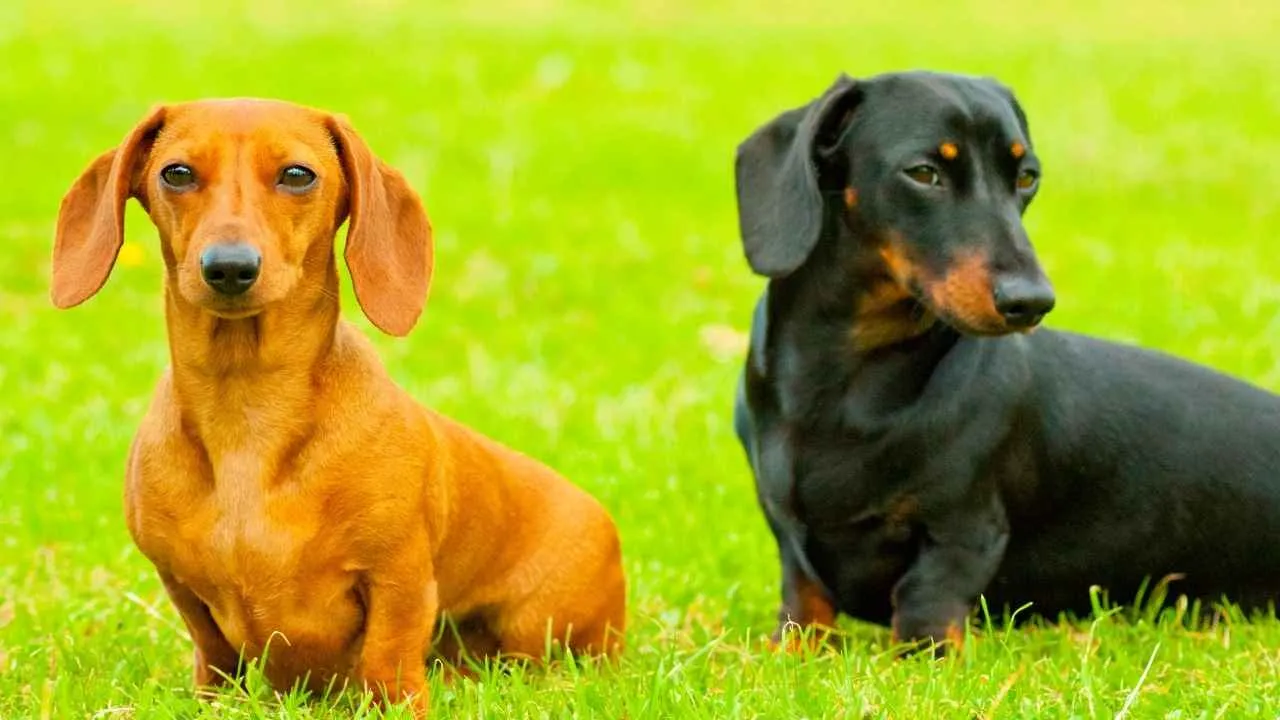
A Dachshund’s golden-brown eyes often appear comically expressive—but they’re also observant. They tend to watch quietly from a corner before deciding how to react. That alert, side-glancing gaze is part of what makes them unpredictable around strangers.
Driven by scent, guided by instinct
Originally bred to trail and flush out burrowed prey, the Dachshund’s focus is sharp and scent-driven. Their gaze often locks onto movement in the environment with surprising intensity. That hunting lineage plays out in how deliberately their eyes track even the smallest shift.
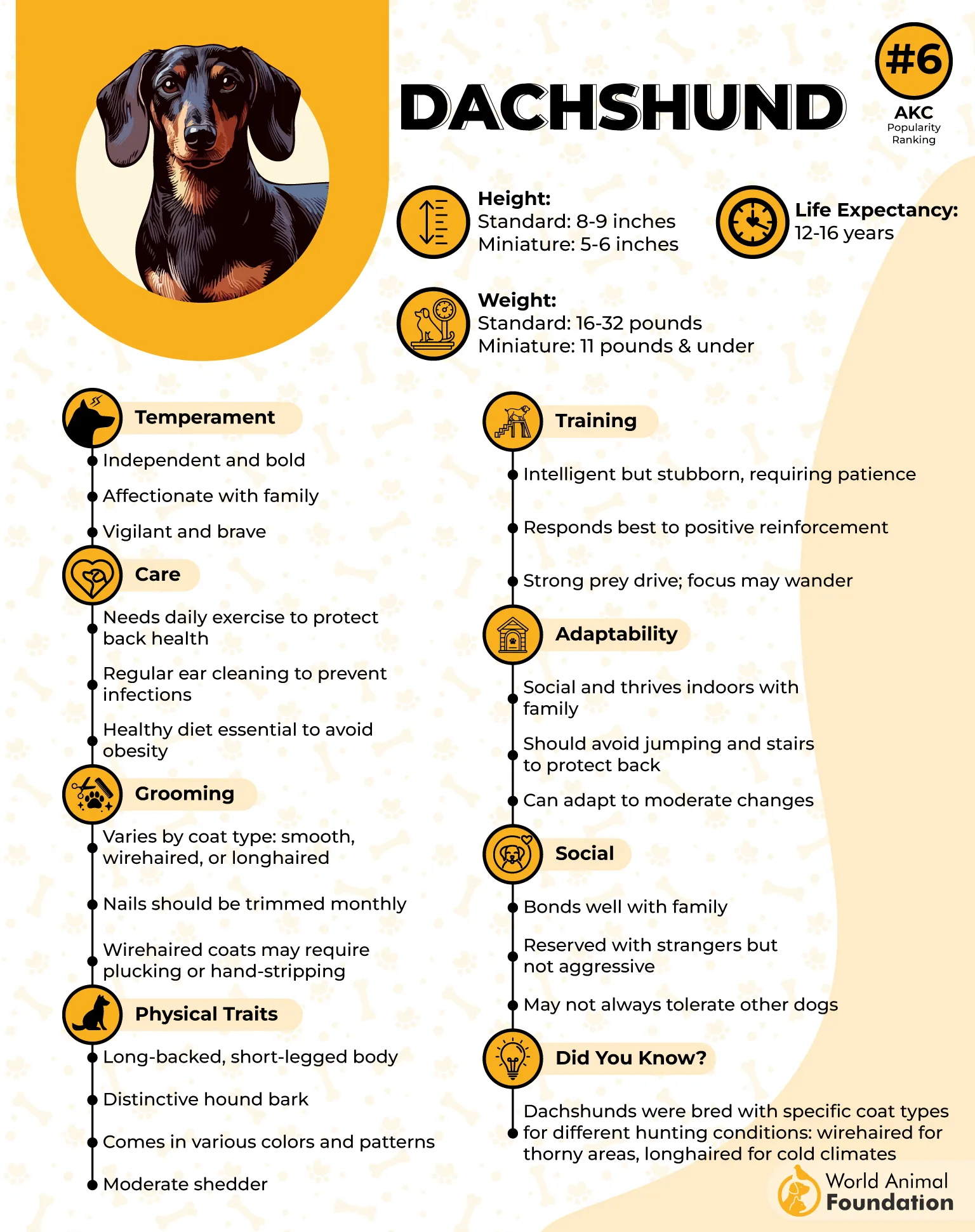
Independent by nature
They don’t constantly look to their owners for cues; they often make decisions based on their own judgment. This independent streak shows in how they hold eye contact—more evaluating than seeking approval. It’s less about obedience, more about negotiation.
Low stature, high perception
From ground level, their eyes are angled upward in a way that adds to their dramatic expressions. Their gaze often seems intense because of how their head tilts slightly when assessing what’s above. This low-eye-view creates a visual presence that feels more personal and direct.
7. Pharaoh Hound
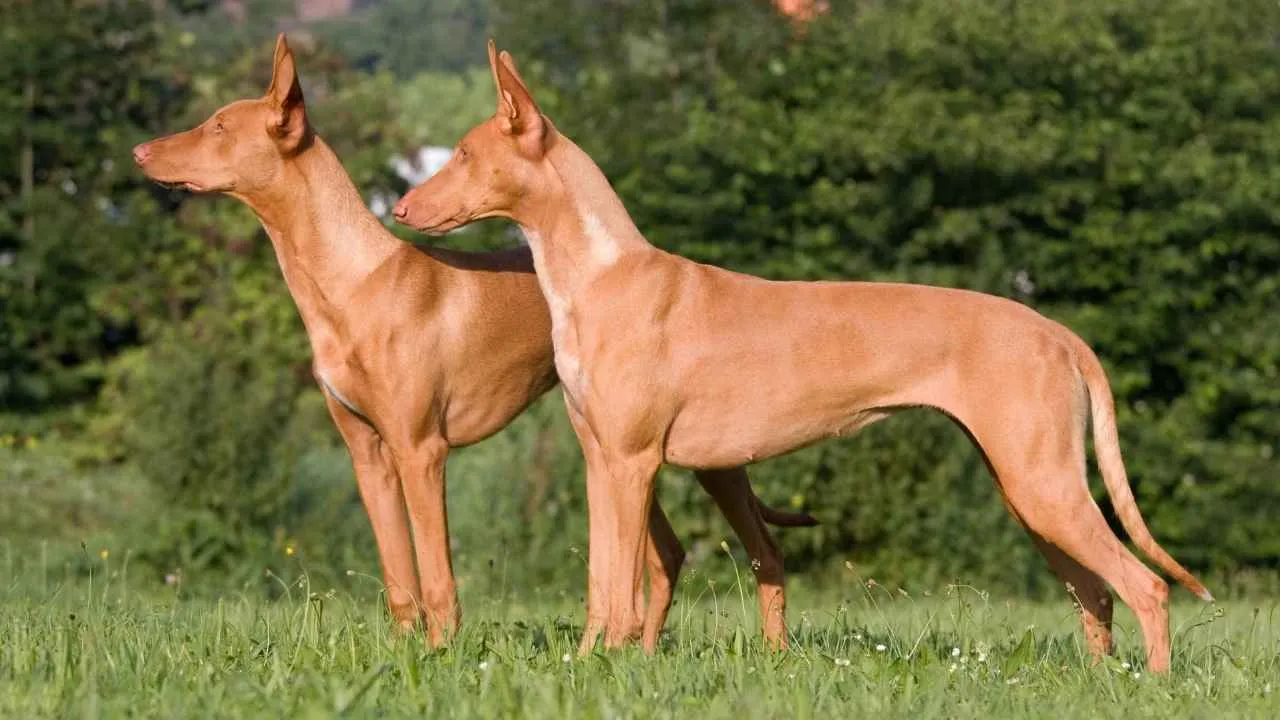
The Pharaoh Hound’s golden eyes carry a piercing, almost haunting presence, refined through centuries of hunting in silence. They lock onto movement in the distance long before the human eye registers anything. That stillness before a sprint says more than sound ever could.
A face that changes with emotion
This breed’s expression is unusually reactive—when excited, it actually blushes. The nose and ears take on a pink flush, something no other breed shows so visibly. That sudden color shift is often paired with the lighting up of its intelligent, amber gaze.
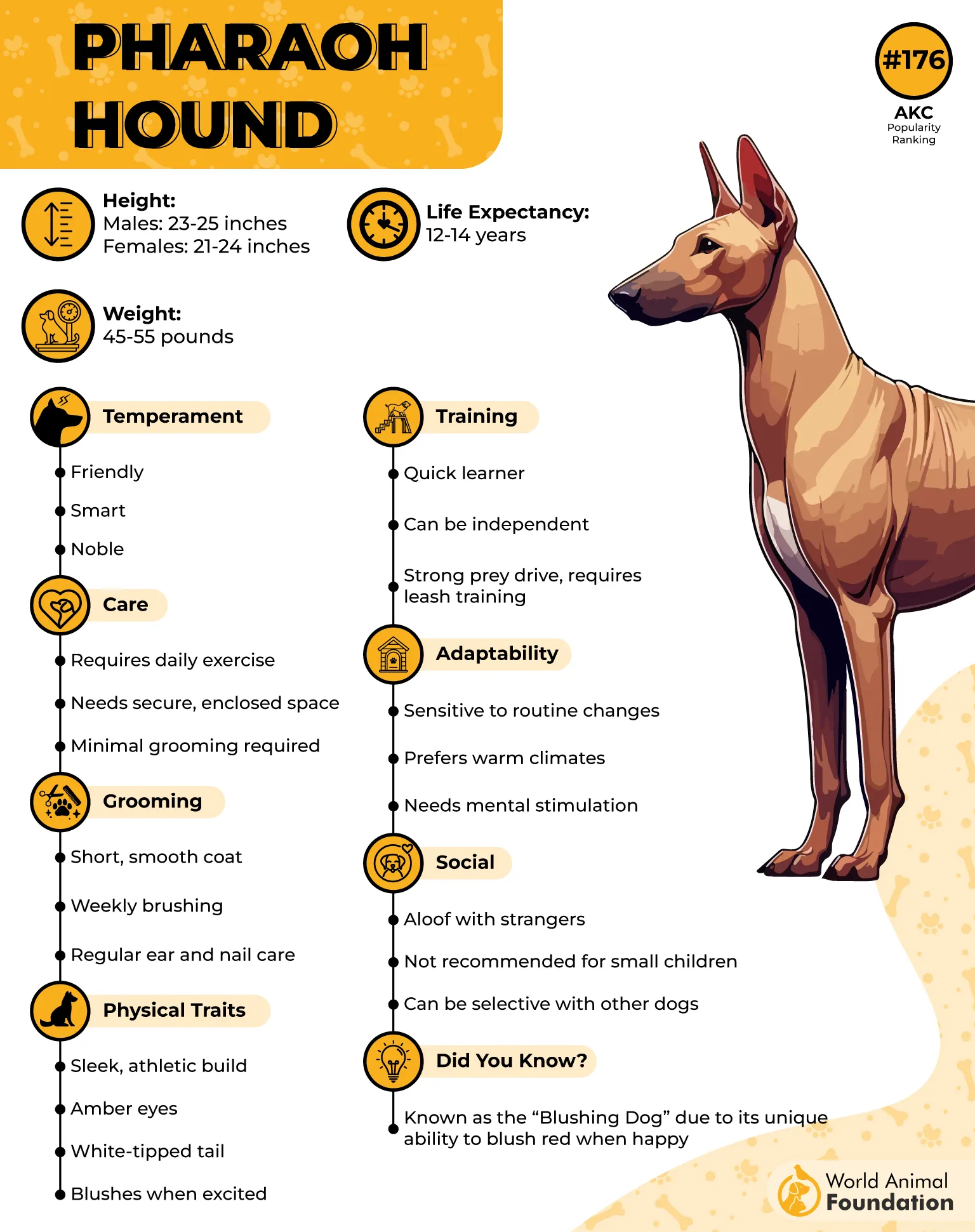
Lean frame built for the chase
The Pharaoh’s body is lean, tucked, and made for swift bursts over rocky terrain, as highlighted by Showsight Magazine. Its gait is smooth and almost feline, conserving energy until there’s something worth pursuing. The tension in its shoulders often signals the chase before it starts.
Selective connection with humans
While affectionate, Pharaoh Hounds are deeply perceptive about human moods. They don’t respond to overbearing attention; they come closer when invited with calm. Watch how it holds eye contact—there’s a brief pause, as if it’s measuring the intent before moving.
8. Poodle
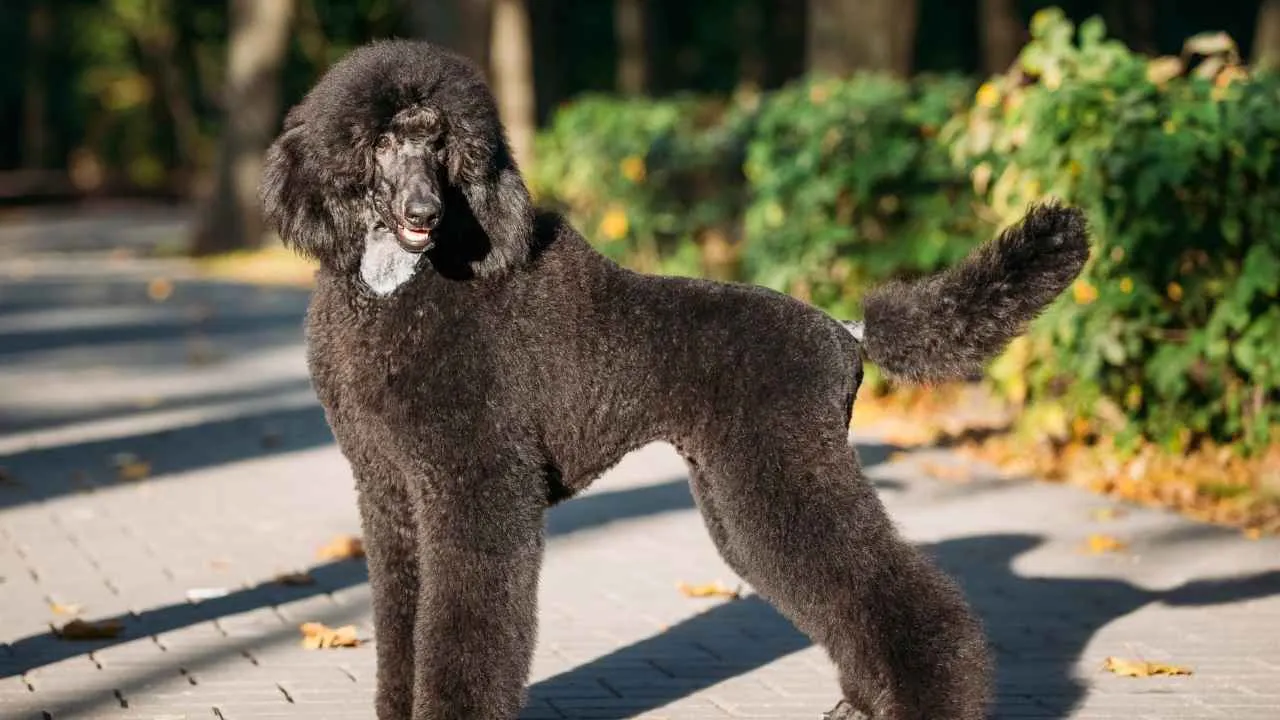
In Poodles, the golden eye shade often leans toward a light amber, especially in darker coat colors like café au lait or apricot. There’s a sharpness in their gaze — not distant, but actively reading the room. These aren’t soft, dreamy eyes; they’re attentive and calculating.
Genetics behind the glow
While brown is standard, certain dilute color lines carry genes that produce golden-hued irises. Breeders focused on café, silver beige, or red tones, and occasionally see this rare trait. It’s more common in Standard Poodles than in Toys or Minis, due to broader genetic diversity.
Precision over impulse
Poodles process before reacting — there’s often a slight pause before they respond to a situation. It’s a trait that’s both behavioral and visual, seen in the stillness of their expression. Their stare isn’t intense, but it’s deeply processing, often waiting for direction.
Mental sharpness made visible
This is a breed that seems to “think with its face.” The golden eyes, when present, give a striking edge to their expression, especially during training or problem-solving. It’s like you can see the gears turning — quiet, fast, and a few steps ahead.
9. Anatolian Shepherd Dog

The Anatolian Shepherd’s golden eyes reflect centuries of flock-guarding instincts. This isn’t a breed that startles easily — its expression stays calm, even when scanning for threats. That unwavering gaze isn’t for show; it’s been bred to evaluate and act when needed.
Built for independence, not companionship
Used to working miles away from human guidance, this breed makes decisions without waiting for permission. It doesn’t rely on commands to perform its role — it assesses, plans, and protects. That same autonomy is seen in how it interacts with unfamiliar people and animals.
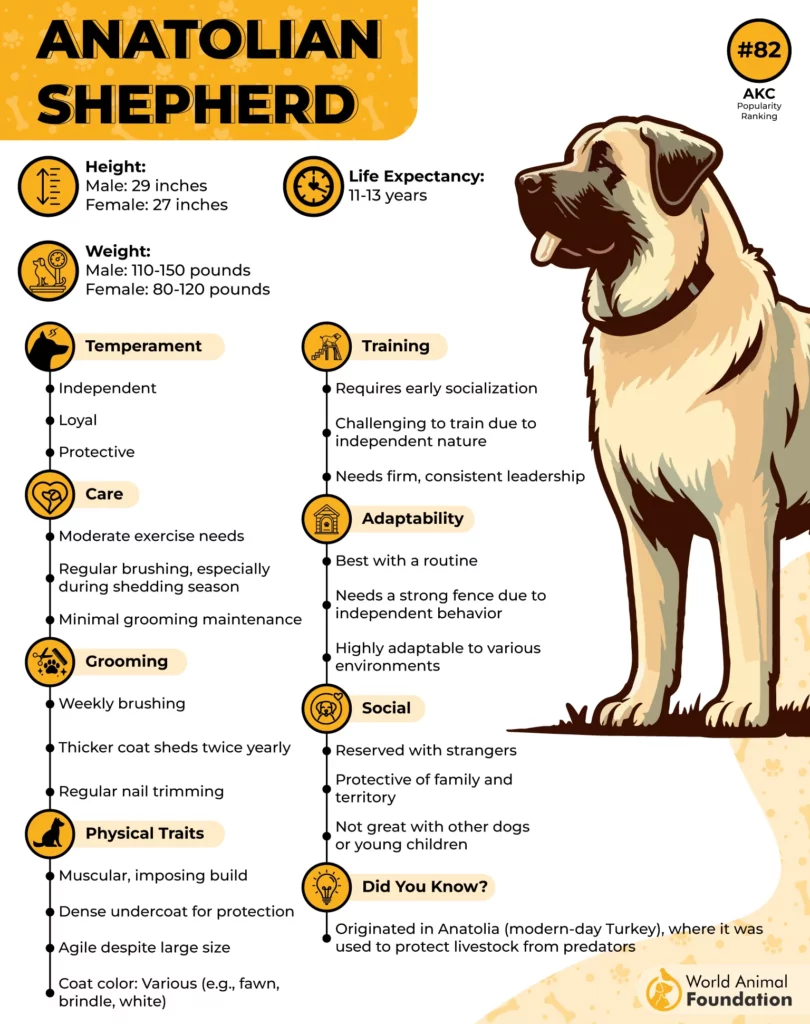
Subtlety in expression, power in action
The Anatolian doesn’t bark or bolt unnecessarily — its approach is measured. It communicates through posture, positioning, and eye contact rather than noise. That stillness can be misread as disinterest, but it’s actually quiet control.
Protection through presence
This breed doesn’t need to lunge or growl to assert authority — its sheer presence is often enough. With livestock, it uses body-blocking and strategic positioning to steer threats away. Its golden eyes rarely leave what it’s assigned to protect, even when at rest.
10. Bluetick Coonhound

The Bluetick Coonhound’s golden eyes carry the intensity of a breed trained to track with unwavering focus. Their gaze is not just alert—it’s calculating, often locked in on a scent trail long before humans can pick up on any cues. That fixed stare isn’t wandering curiosity; it’s job-specific concentration.
Built for stamina, not speed
Blueticks were bred for endurance, designed to follow long nighttime trails through rough terrain. Their deep chest and well-muscled frame support this stamina-heavy work without rushing. Everything about their build favors persistence over sprinting, which reflects in their calm, measured energy indoors.
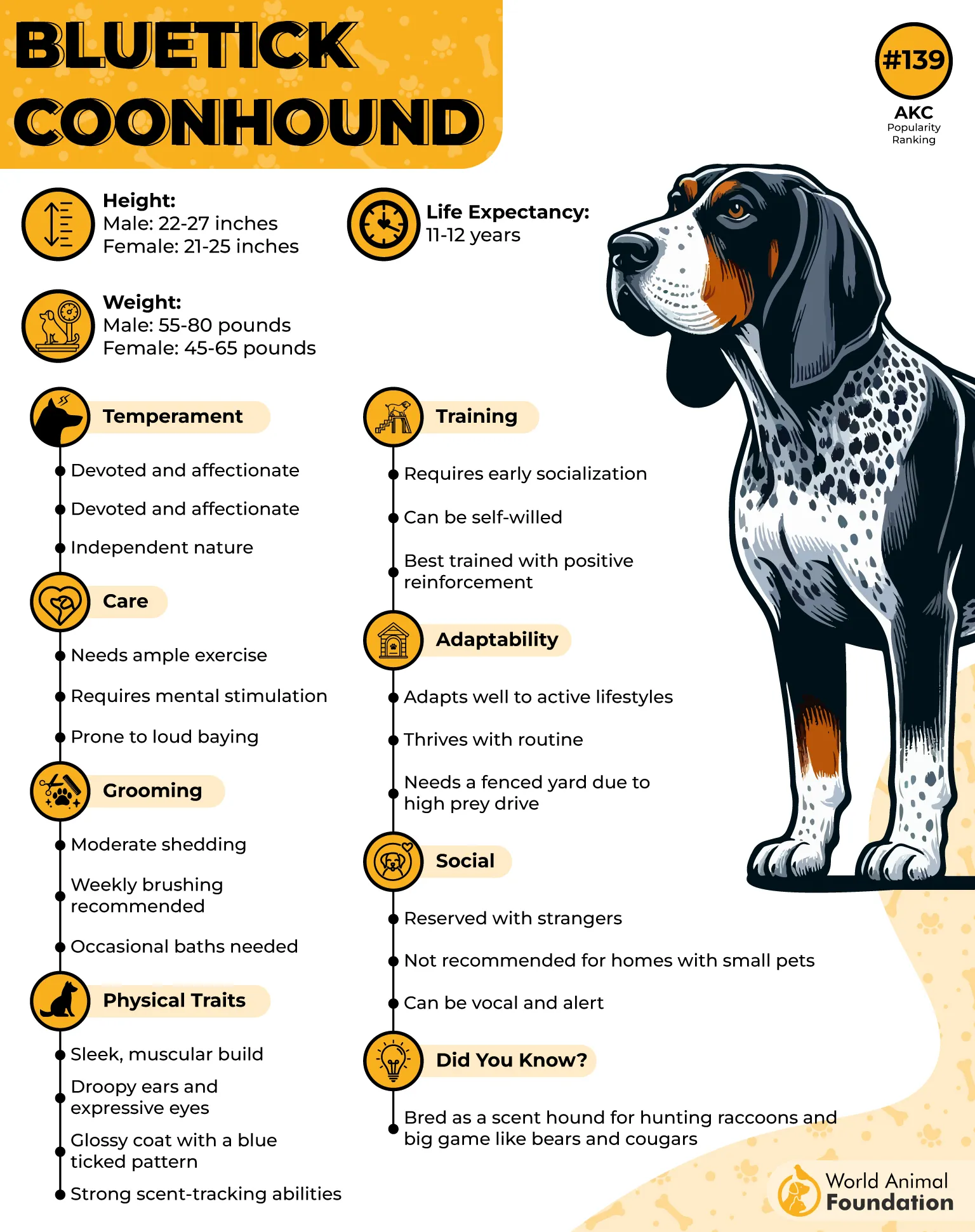
Sound-driven and scent-focused
While many breeds rely on vision, Blueticks are more scent- and sound-reliant, which gives their eyes a unique stillness. Even in a room full of movement, they seem to wait and listen before reacting. Their calm expression often masks a high-alert internal state.
Vocal, but with emotional nuance
The breed’s signature baying isn’t mindless noise—it varies depending on what the dog is sensing or trying to signal. Experienced handlers can read changes in pitch as easily as shifts in body posture. Their golden eyes often soften during calm moments, giving a rare glimpse into a highly attuned emotional range.
Conclusion
You don’t realize how much a dog’s eyes can change your impression of them until you see something different. Most of us are used to dark brown or light brown eyes. But golden? That hits differently. It’s subtle but memorable.
Whether it’s the stunning amber eyes of a Ridgeback or the deep golden stare of a Bluetick, these dogs carry something that sets them apart. It’s not about beauty alone—it’s about energy, depth, and personality showing through a simple gaze.
Sure, other dogs have green eyes or blue eyes, and those are beautiful too. But there’s something about this golden warmth that feels ancient and calm.
In the end, it’s not just eye color—it’s expression. If you ever meet one of these breeds in person, you’ll feel it too. That captivating gaze stays with you long after the tail wags and the dog walks away.


